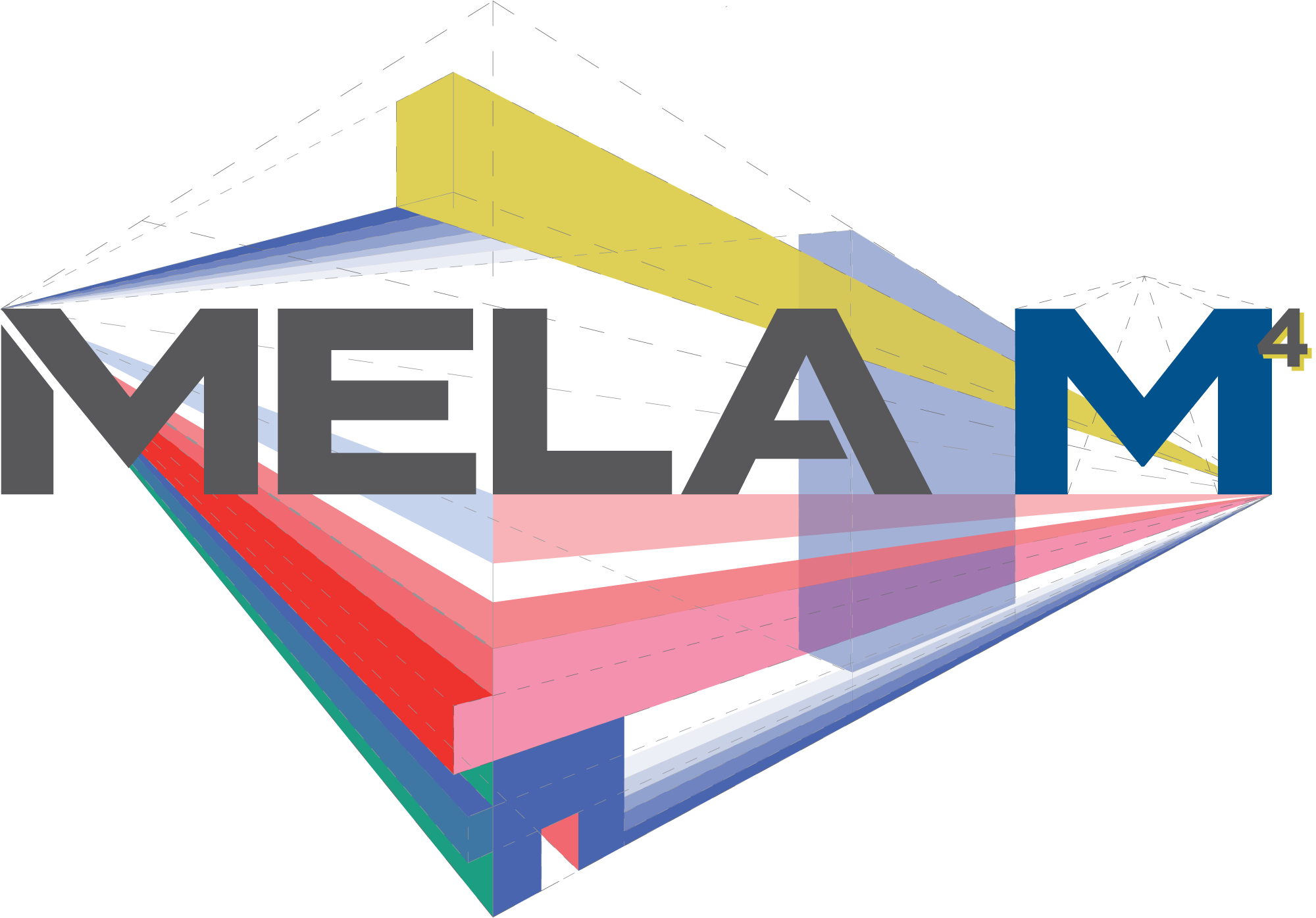The poetry of the subatomic and what it amounts to in the meta is at the heart of Mela M’s vast body of work. Her exhibition history has seen her experiment with and master many mediums, but she is at her core a painter. She composes objects in service to the pictorial and blasts them with an irradiated color germane to modernist painting sensibilities. Even when presented as a sculpture, her work is never not a painting. Her constructions are puzzles of possibility. Pictorial experiments in the round. But just because she does not adhere to the wall-mounted oil on canvas format doesn’t make her any less an heir to Malevich, El Lissitsky, Moholy-Nagy, and Rodchenko in the East and Stella, Halley, Kelly and Johns’ series of crosshatched paintings in the West.
In each of these artists, Mela finds her antecedent as she pushes forward their visual accomplishments into her own. Kasmir Malevich of course posited that the geometric was the next battleground for visual art after the figure. El Lissitsky, trained as an architect, honed geometry itself as simultaneous subject and composition. Laszlo Moholy-Nagy insisted on the forward thinking nature of pure form. Despite ending up as a propagandist, Alexander Rodchenko brought geometric abstraction into the realm of daily life. Each of these tangents can be found in kaleidoscopic layers – physically, compositionally and conceptually – throughout Mela’s oeuvre.
Working professionally in the United States for over twenty years, there is an encapsulation in her work of many influences from advanced American visual art. While the nerdy Peter Halley and the sensual Frank Stella hardly seem comparable, Mela’s art has anchored at both ports throughout her exhibition history. While nobody could ever accuse her of being a minimalist, her hard edges and distinct color harken to Ellsworth Kelly but with a rhythmic improvisation more akin to what Jasper Johns accomplished in his crosshatch paintings. Again, Mela’s mashups take canonical modernist history and rushes it all into the twenty-first century with a sense of freshness and purpose that will certainly be appreciated decades from now when the long arc of history will be easier to surmise.
Mela’s art is as fascinating a study in the East and West as the woman herself. Her compositions are resolutely geometric and of late almost always favor the jagged; resembling at times stacks of origami sculptures with their sharp diagonals and brilliant colors. But Mela is the child of Russian and Ukrainian parents, not the “Far East” of Origami but the easternmost battlefield in Europe.
Her color choices tend toward the saturated, and yet, the subtleties between two shades of one color, even when ramped up to the extreme, evince the eye of a colorist, a painter with subtleties even when delivered at a high visual volume. The hard edges of her Soviet predecessors were not known to carry nuance, but the possibilities of America allow her the chance to experiment in public – and her work, for all of its panache and certainty, is still radically experimenting with the formal possibilities of objecthood in the digital age.
Historically, we have to admire the rigorous devotion she has for pushing the possibilities of geometric abstract painting out of its ordinary confines. Our current historical era is more likely to reward an artist for painting a cartoon character in a hundred different poses. Left unappreciated is an artist whose work pushes into new visual territory. The worship of all things tech has left stranded analog artists who tinker at the formal level in finding new forms that have never existed outside the imagination. There is an art world for artists like Mela in which to share one’s accomplishments in the making of new realities in abstract objecthood, but culturally these things have a tiny audience. But they do have one thing working in their favor: posterity.
In a world infatuated with the digital, it is the painters that will deliver who we were/are to eyeballs in the far off future. Mela’s paintings carry the dual fascination and burden of the pixel. Her certain geometry and almost glowing colors mimic the digital experience in analog fabrication. She composes in a perfectly contemporary manner but fabricates with an eye on permanence. She is therefore battling with history as much as she is joining it. What we see on our screens and our phones as pixels will never survive a millenia, technology eats itself. But the materials of fine art that Mela uses have been proven to last. Put a painting in the attic and check back in four hundred years. Besides a layer of dust it is fine… future generations will understand the structural underpinnings of our digital era when Mela’s art is on display hundreds of years from now, grounded in art history, reflecting her specific illuminated era.
Essay by Mat Gleason
3/2/2022
